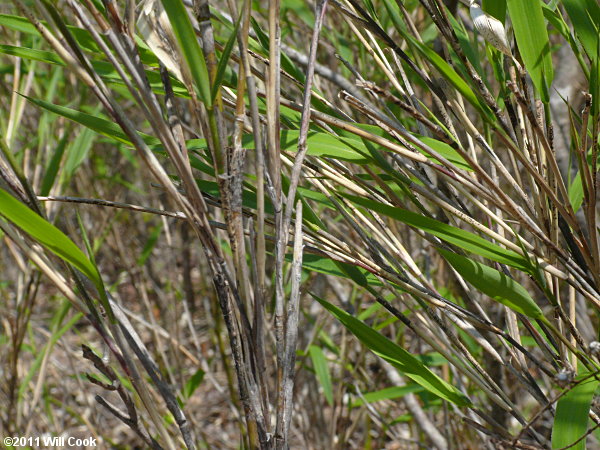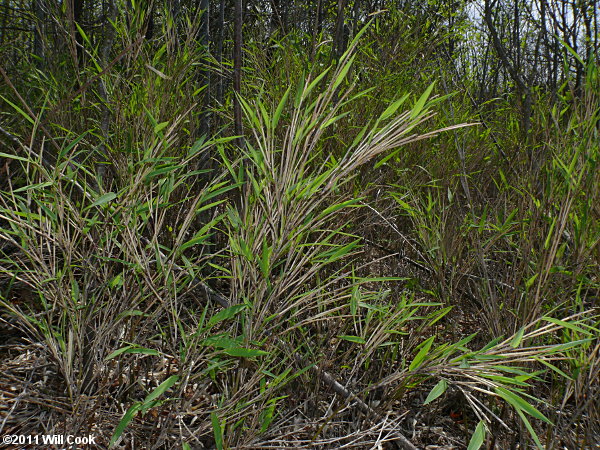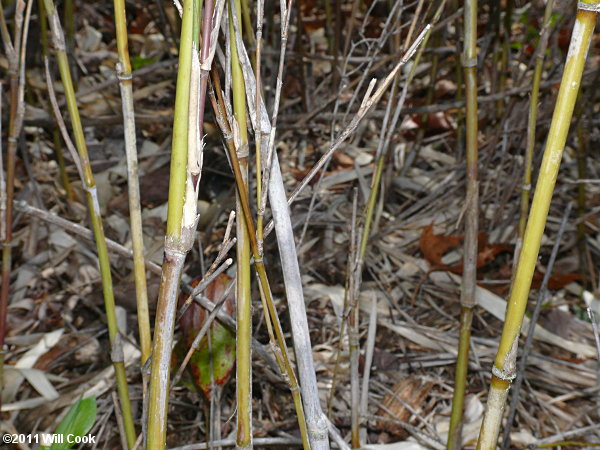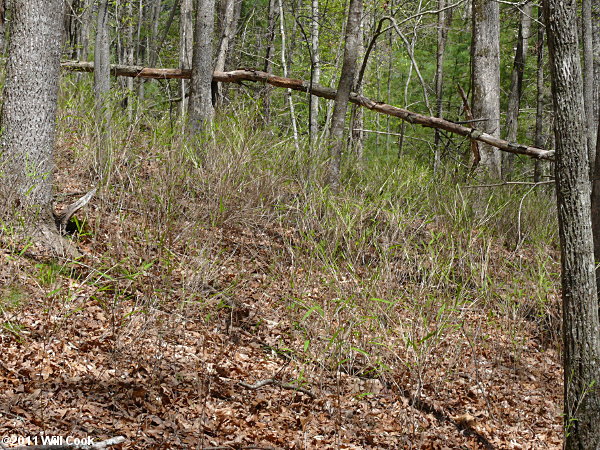
| This colonial woody grass is very similar to the common Switch Cane (Arundinaria tecta). The easiest way to tell the two apart is by habitat: Hill Cane grows on dry slopes and Switch Can grows in moist bottomlands. Indeed, Hill Cane is so similar to Switch Cane that it wasn't formally described until 2006 (see Triplett et al. 2006, full citation below). Hill Cane grows in the Mountain region and adjacent Piedmont of the southwestern corner of North Carolina.
Burke Co., NC 4/16/2011.
|

| For the gory details on how to be sure, see the key in Weakley's Flora:
- Foliage blades chartaceous, deciduous, abaxial surfaces pilose or glabrous, weakly tessellate; primary branches usually < 35 cm long, basal nodes of primary branches not developing secondary branches; top knot blades 12-22.5 cm long; rhizomes with or without air canals
........ A. appalachiana
- Foliage blades coriaceous, persistent, abaxial surfaces densely pubescent or glabrous, strongly tessellate; primary branches usually > 50 cm long, basal nodes of primary branches developing secondary branches; top knot blades 20-30 cm long; rhizomes with air canals ........ A. tecta
Burke Co., NC 4/16/2011.
|

| Burke Co., NC 4/16/2011.
|

| McDowell Co., NC 4/16/2011.
|
Triplett, JK, LG Clark, AS Weakley. 2006. Hill cane (Arundinaria appalachiana), a new species of bamboo (Poaceae: Bambusoideae) from the Southern Appalachian Mountains. Sida 22: 79-95.



